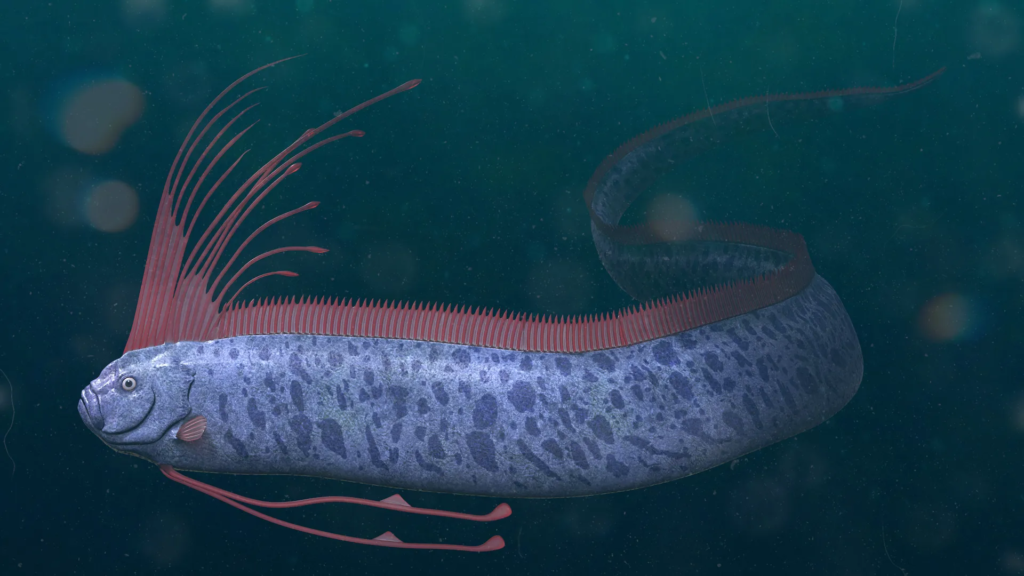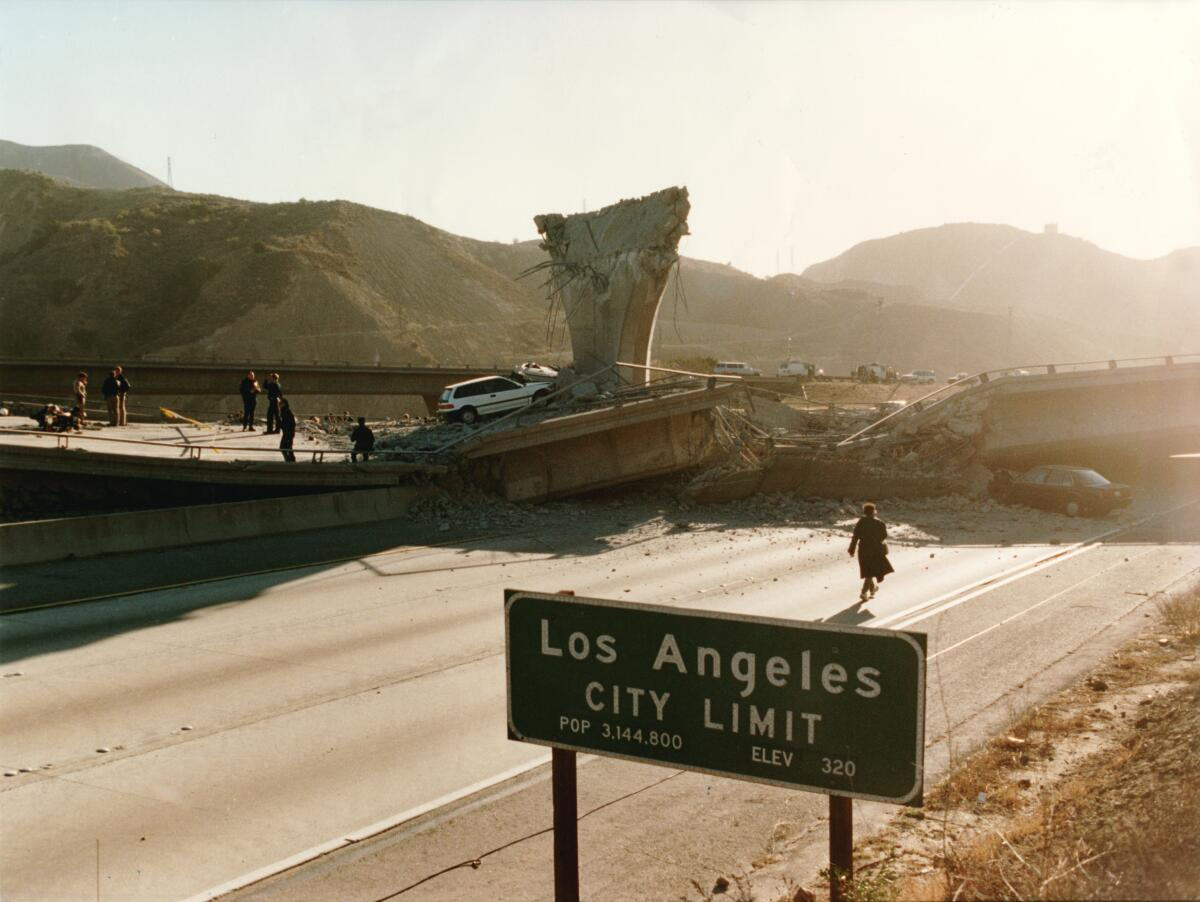The deep sea holds many secrets, and among them is the mysterious oarfish, often referred to as the “doomsday fish.” This rare and elusive creature has long been associated with folklore and superstition, particularly for its supposed ability to predict natural disasters.
On August 10, 2024, this legendary fish made a startling appearance off the coast of California, raising eyebrows and sparking conversations about its ominous reputation.
Paddle-boarders who were out enjoying the calm waters of California’s coastline were the first to spot the oarfish, an encounter that is as rare as it is intriguing. The fish, measuring an impressive 12.25 feet in length, was found floating near the surface, lifeless yet mesmerizing with its long, ribbon-like body and distinctive red dorsal fin crest.
This particular oarfish was an adult male, weighing 74.3 pounds, and its presence so close to shore immediately drew the attention of local scientists and researchers.
The oarfish was promptly transported to the National Oceanic and Atmospheric Administration’s (NOAA) facility for further examination. A team of experts from California State University Fullerton and NOAA Fisheries’ Southwest Fisheries Science Centre conducted a necropsy—an animal autopsy—to uncover more about this mysterious deep-sea dweller.
Despite the detailed examination, the exact cause of the fish’s death remains undetermined, leaving scientists with more questions than answers about this enigmatic creature.
However, the story took a dramatic turn just two days later when a 4.4-magnitude earthquake struck Los Angeles. The timing of the earthquake, so soon after the discovery of the oarfish, has reignited discussions about the ancient belief that this fish can predict seismic activity.
This belief is particularly strong in Japanese culture, where the oarfish is known as the “Messenger from the Sea God’s Palace.” According to legend, when an oarfish surfaces, it is a sign that an earthquake is imminent.
The Connection Between ‘Doomsday Fish’ and Earthquakes

The connection between the doomsday fish and earthquakes is rooted in both folklore and some historical observations:
- Folklore and Mythology: The belief that oarfish can predict earthquakes originates from Japanese folklore, where the oarfish is seen as a harbinger of disaster. The fish’s appearance near the shore is often taken as a warning sign of an upcoming earthquake or tsunami.
- Historical Sightings Before Disasters: There have been several reports of oarfish sightings preceding major seismic events. The most notable instance occurred in 2011 when multiple oarfish were spotted in Japanese waters just before the devastating Tōhoku earthquake and tsunami. These sightings have fueled the belief that doomsday fish may have a unique sensitivity to seismic activities or changes in the Earth’s crust.
- Scientific Perspective: While these connections are compelling, modern science has yet to find concrete evidence that links doomsday fish appearances directly to earthquakes. Some scientists suggest that the oarfish, which lives in deep waters, may be more attuned to changes in the ocean’s environment, such as shifts in temperature, pressure, or even minor tremors. These environmental changes might lead the fish to surface, but this is still largely speculative.
- Coincidence vs. Causation: Despite the lack of scientific proof, the coincidental timing of oarfish sightings and earthquakes continues to captivate the public’s imagination. The recent sequence of events in California has added to this ongoing debate, leaving many to wonder if there is more to the legend of the “doomsday fish” than mere coincidence.
Connection of Doomsday Fish with Earthquake in Japan in 2011
The connection between the doomsday fish and earthquakes became particularly notable following the 2011 Tōhoku earthquake and tsunami. In the weeks leading up to the disaster, several oarfish were reported to have been seen near the shores of Japan. This unusual behavior was closely observed and documented, leading many to link the sightings with the catastrophic earthquake. The coincidence of these sightings with the timing of the disaster reinforced the notion that oarfish might have a predictive role.
Despite these anecdotal reports, scientific evidence supporting a direct link between oarfish appearances and earthquakes is lacking. Researchers suggest that changes in environmental conditions, such as shifts in water temperature or pressure, might drive oarfish to the surface. However, the continued interest in the oarfish’s supposed connection to earthquakes highlights the enduring allure of folklore and the search for patterns in natural disasters. The belief in the oarfish as a seismic predictor remains a compelling part of Japanese culture and continues to spark curiosity and investigation.
The recent events in California have led many to wonder if there could be any truth to these ancient superstitions. While modern science largely dismisses the idea that the oarfish can predict earthquakes, the coincidence is difficult to ignore. After all, this is not the first time such a sequence of events has occurred.
In 2011, multiple oarfish sightings were reported in Japan just before the catastrophic Tōhoku earthquake and tsunami. Similar reports have surfaced in other parts of the world, each time fueling the myth of the doomsday fish as a harbinger of disaster.
The connection between doomsday fish sightings and earthquakes remains a topic of debate among scientists. Some suggest that the fish, which typically resides at depths of 200 to 1,000 meters, may be more sensitive to changes in the Earth’s crust and oceanic conditions.
This heightened sensitivity could explain why doomsday fish sometimes appear near the surface before major seismic events. However, there is no conclusive scientific evidence to support this theory, and many experts caution against drawing direct correlations based solely on anecdotal reports.
Despite the lack of hard evidence, the timing of the recent earthquake in Los Angeles has left a lasting impression on those who witnessed the discovery of the oarfish. The fish, with its eerie and otherworldly appearance, seems almost like a messenger from the depths, bringing with it a warning that is difficult to ignore. Whether this is a case of pure coincidence or something more remains to be seen, but the story of the “doomsday fish” continues to captivate the imagination of many.
For now, the oarfish remains a creature shrouded in mystery, its role as a potential predictor of earthquakes unproven yet persistently fascinating. As scientists continue to study the deep-sea environments where these fish thrive, perhaps more light will be shed on the true nature of this enigmatic species. Until then, the legend of the oarfish and its connection to natural disasters will likely endure, fueled by events like the recent earthquake in Los Angeles.
In the end, the tale of the oarfish serves as a reminder of the vast and unexplored mysteries that still lie beneath the ocean’s surface. It is a story that blends science, folklore, and the unpredictable power of nature—a story that, much like the oarfish itself, seems to rise from the depths to capture our collective curiosity.
let’s enjoy few years on earth with peace and happiness….✍🏼🙏

